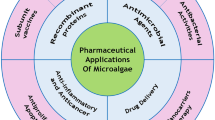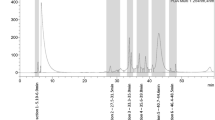Abstract
Purpose: Ascorbic acid (AA), the natural antioxidant, has been demonstrated to exert an antimetastatic action; however, AA is quite unstable in physiological condition. The aim of the present study is to investigate the stability, the antioxidation and the antimetastatic effects of three lipophilic AA derivatives in vitro as well as in vivo. Methods: The 95D cells were treated with ascorbic acid-2-O-phosphate-6-O-laureate (AA2P6L), ascorbic acid-2-O-phosphate-6-O-myristate (AA2P6M) and ascorbic acid-2-O-phosphate-6-O-stearate (AA2P6S). AA derivatives’ stability in medium under cell culture condition, in the presence and in the absence of 95D cells, was assessed by high-performance liquid chromatography assay. Cell viability and intracellular oxidative stress were measured by MTT assay and CDCFH assay, respectively. Wound healing assay and cell adhesion assay were used to investigate the antimetastatic activities against 95D cells in vitro, and the C57BL/6 mice model was used to evaluate the antimetastatic action in vivo. Results: All the three AA derivatives exhibited excellent stability, significantly different from AA. Results of MTT assay showed that IC50 values of the cytotoxicity of those AA derivatives, namely AA2P6L, AA2P6M and AA2P6S, were 38.46, 28 and 22.97 μg/ml, while the CDCFH assay indicated that EC50 values of antioxidant effects on 95D cells were 31.12, 33.51 and 38.31 μg/ml, respectively. Through the ratio of IC50 vs EC50 for AA derivatives, AA2P6L was demonstrated to be the most effective AA derivative, which retained the antioxidant ability as well as low cytotoxicity. AA2P6L dose-dependently inhibited 95D cells’ migration and adhesion, by 50% at the concentration of 20 and 57 μg/ml, respectively. In the animal experiment, intraperitoneal administration of 75 mg/kg AA2P6L decreased the number of metastatic nodules by 62% and elevated the survival rate of C57BL/6 mice about onefold compared to the control group. Conclusion: AA2P6L, a lipophilic AA derivative with antioxidation, is shown to be a potent antimetastatic agent through the inhibition of tumor invasion. These results support future investigations on the feasibility of cancer chemotherapy with AA2P6L.




Similar content being viewed by others
References
Abate C, Patel L, Rauscher RJ, Curran T (1990) Redox regulation of fos and jun DNA-binding activity in vitro. Science 249:1157–1161
Amstad P, Crawford D, Muehlematter D, Zbinden I, Larsson R, Cerutti P (1990) Oxidants stress induces the proto-oncogenes c-fos and c-myc in mouse epidermal cells. Bull Cancer 77:501–502
Andela VB, Schwarz EM, Puzas JE, O’Keefe RJ, Rosier RN (2000) Tumor metastasis and the reciprocal regulation of prometastatic and antimetastatic factors by nuclear factor κB. Cancer Res 60:6557–6562
Bissell MJ, Hatie C, Farson DA, Schawrz RI, Soo WJ (1980) Ascorbic acid inhibits replication and infectivity of avian RNA tumor virus. Proc Natl Acad Sci USA 77:2711–2715
Brenneisen P, Briviba K, Wlaschek M, Wenk J, Scharffetter KK (1997) Hydrogen peroxide (H2O2) increases the steady-state mRNA levels of collagenase/MMP-1 in human dermal fibroblasts. Free Radic Biol Med 22:515–524
Brizel DM, Scully SP, Harrelson JM, Layfield LJ, Bean JM, Prosnitz LR, Dewhirst MW (1996) Tumor oxygenation predicts for the likelihood of distant metastases in human soft tissue sarcoma. Cancer Res 56:941–943
Cameron E, Pauling L, Leibovitz B (1979) Ascorbic acid and cancer: a review. Cancer Res 39:663–681
Comoglio PM, Boccaccio C (2001) Scatter factors and invasive growth. Semin Cancer Biol 11:153–165
Cora NS (2003) Metastatic bladder cancer: role of chemotherapy and new agents. EAU Update Ser 1:108–117
Drake IM, Davies MJ, Mapstone MP, Dixon MF, Schorah CJ, White KL, Chalmers DM, Axon AT (1996) Ascorbic acid may protect against human gastric cancer by scavenging mucosal oxygen radicals. Carcinogenesis 17:559–562
Eskenazi AE, Pinkas J, Whitin JC, Arguello F, Cohen HJ, Frantz CN (1993) Role of antioxidant enzymes in the induction of increased experimental metastasis by hydroxyurea. J Natl Cancer Inst 85:711–721
Guven M, Ozturk B, Sayal A, Ozeturk A, Ulutin T (1999) Lipid peroxidation and antioxidant system in the blood of cancerous patients with metastasis. Cancer Biochem Biophys 17:155–162
Hockel M, Schlenger K, Aral B, Mitze M, Schaffer U, Vaupel P (1996) Association between tumor hypoxia and malignant progression in advanced cancer of the uterine cervix. Cancer Res 56:4509–4515
Huang P, Feng L, Oldham EA, Keating MJ, Plunkett W (2000) Superoxide dismutase as a target for the selective killing of cancer cells. Nature 407:390–395
Jemal A, Thomas A, Murray T, Thun M (2002) Cancer statistics. CA Cancer J Clin 52: 23–47
Joan HS, Barry S, Jordan B, Jay W, Martha L, Lisa P, Marilyn L, William B (1996) Amifostine, cisplatin, and vinblastine in metastatic non-small-cell lung cancer: a report of high response rates and prolonged survival. J Clin Oncol 14:1913–1921
Kagayama K, Onoyama Y, Otani S, Matsui-Yuasa I, Nagao N, Miwa N (1995) Enhanced inhibitory effects of hyperthermia combined with ascorbic acid on DNA synthesis in Ehrlich ascites tumor cells grown at a low cell density. Cancer Biochem Biophys 14:273–280
Kato R, Ishikawa T, Kamiya S, Oguma F, Ueki M, Goto S, Nakamura H, Katayama T, Fukai F (2002) A new type of antimetastatic peptide derived from fibronectin. Clin Cancer Res 8:2455–2462
Kohn EC, Liotta LA (1995) Molecular insights into cancer invasion: strategies for prevention and intervention. Cancer Res 55:1856–1862
Kozuki Y, Miura Y, Yagasaki K (2000) Inhibitory effects of carotenoids on the invasion of rat ascites liver cancer cells in culture. Cancer Lett 151:111–115
Lam EWN, Zwecka R, Seftor EA, Nieva DRC, Davidson BL, Engelhardt JF, Hendrix MJC, Oberley LW (1999) Effects of antioxidant enzyme overexpression on the invasive phenotype of hamster cheek pouch carcinoma cells. Free Radic Biol Med 27:572–579
Leung PY, Miyashita K, Young M, Tsao CS (1993) Cytotoxic effect of ascorbate and its derivatives on cultured malignant and nonmalignant cell lines. Anticancer Res 13:475–480
Levine E, Raghaven D (1993) MVAC for bladder cancer-time to move forward again. J Clin Oncol 11:387–389
Liotta LA, Wewer U, Rao NC, Schi.mann E, Stracke M, Guirguis R, Thorgeirsson U, Muschel R, Sobel M (1988) Biochemical mechanism of tumor invasion and metastasis. Prog Clin Biol Res 256:3–16
Liu JW, Nagao N, Kageyama K, Miwa N (1999) Antimetastatic and anti-invasion ability of phospho-ascorbyl palmitate through intracellular ascorbate enrichment and the resultant antioxidant action. Oncol Res 11:479–487
Maase HV, Hansen SW, Roberts JT, Dogliotti L, Oliver T, Moore MJ, Bodrogi I, Albers P, Knuth A, Lippert CM, Kerbrat P, Rovira PS, Wersall P, Cleall SP, Roychowdhury DF, Tomlin I, Visseren-Grul CM, Conte PF (2000) Gemcitabine and cisplatin versus methotrexate, vinblastine, doxorubicin, and cisplatin in advanced or metastatic bladder cancer: results of large, randomized, multinational, multicenter, phase III study. J Clin Oncol 17:3068–3077
Mareel M, Leroy A (2003) Clinical, cellular, and molecular aspects of cancer invasion. Physiol Rev 83:337–376
McCarty MF (1986) An antithrombotic role for nutritional antioxidants: implications for tumor metastasis and other pathologies. Med Hypotheses 19:345–357
McMullen CB, Fleming E, Clarke G, Armstrong MA (2000) The role of reactive oxygen intermediates in the regulation of cytokine-induced ICAM-1 surface expression on endothelial cells. Mol Cell Biol Res Commun 3:231–237
Michael BA, Jared AG, Jeffrey AS, David FM, Linda T, Patricia S, Robert A, James W (2002) A phase II pilot trial of concurrent biochemotherapy with cisplatin, vinblastine, temozolomide, interleukin 2, and IFN-α2B in patients with metastatic melanoma. Clin Cancer Res 8:3075–3081
Mosmann T (1983) Rapid colorimetric assay for cellular growth and survival: application to proliferation and cytotoxicity assays. J Immunol Methods 65:55–63
Mukai M, Shinkai K, Tateishi R, Mori Y, Akedo H (1987) Macrophage potentiation of invasive capacity of rat ascites hepatoma cells. Cancer Res 47:2167–2171
Nagao N, Etoh T, Yamaoka S, Okamoto T, Miwa N (2000) Enhanced invasion of tax-expressing fibroblasts into the basement membrane is repressed by phosphorylated ascorbate with simultaneous decreases in intracellular oxidative stress and NF-kappa B activation. Antioxid Redox Signal 2:727–738
Nonaka Y, Iwagaki H, Kimura T, Fuchimoto S, Orita K (1993) Effect of reactive oxygen intermediates on the in vitro invasive capacity of tumor cells and liver metastasis in mice. Int J Cancer 54:983–986
Ohnishi Y, Sakamoto T, Fujii H, Kimura F, Murata J (1997) Characterization of a liver metastatic variant of murine colon 26 carcinoma cells. Tumor Biol 18:113–122
Szatrowski TP, Nathan CF (1991) Production of large amounts of hydrogen peroxide by human tumor cells. Cancer Res 51:794–798
Sugiyama T, Sadzuka Y (1999) Combination of theanine with doxorubicin inhibits hepatic metastasis of M5076 ovarian sarcoma. Clin Cancer Res 5:413–416
Takenaga M, Igarashi R, Nakayama T, Mizushima Y (1999) Lecithinized ascorbic acid effectively inhibits murine pulmonary metastasis. Anticancer Res 19:1085–1091
Wells WW, Bocque PA, Xu DP, Meyer EB, Charamella LJ, Dimitrov NV (1995) Ascorbic acid and cell survival of adriamycin resistant and sensitive MCF-7 breast tumor cells. Free Radic Biol Med 18:699–708
Yamada KM, Kennedy DW, Yamada SS, Gralnick H, Chen WT, Akiyama SK (1990) Monoclonal antibody and synthetic peptide inhibitors of human tumor cell migration. Cancer Res 50:4485–4496
Yang JQ, Zhao W, Duan H, Robbins MEC, Buettner GR, Oberley LW, Doman FE (2001) v-Ha-Ras oncogene upregulate the 92-kDa Type IV collagenase (MMP-9) gene by increasing cellular superoxide production and activating NF-κB. Free Radic Biol Med 31:520–529
Zhu ZY, Sanchez-Sweatman O, Huang XJ, Wiltrout R, Khokha R, Zhao Q, Gorelik E (2001) Anoikis and metastatic potential of cloudman S91 melanoma cells. Cancer Res 61:1707–1716
Acknowledgements
We are grateful to Zhongyan Tao, Institute of Bioengineering, for their structural modifications of AA.
Author information
Authors and Affiliations
Corresponding author
Rights and permissions
About this article
Cite this article
Liu, J., Zhang, X., Yang, F. et al. Antimetastatic effect of a lipophilic ascorbic acid derivative with antioxidation through inhibition of tumor invasion. Cancer Chemother Pharmacol 57, 584–590 (2006). https://doi.org/10.1007/s00280-005-0073-9
Received:
Accepted:
Published:
Issue Date:
DOI: https://doi.org/10.1007/s00280-005-0073-9




